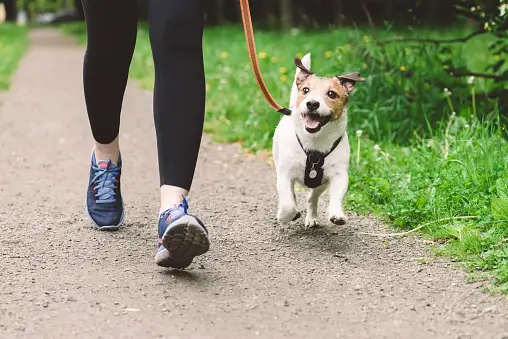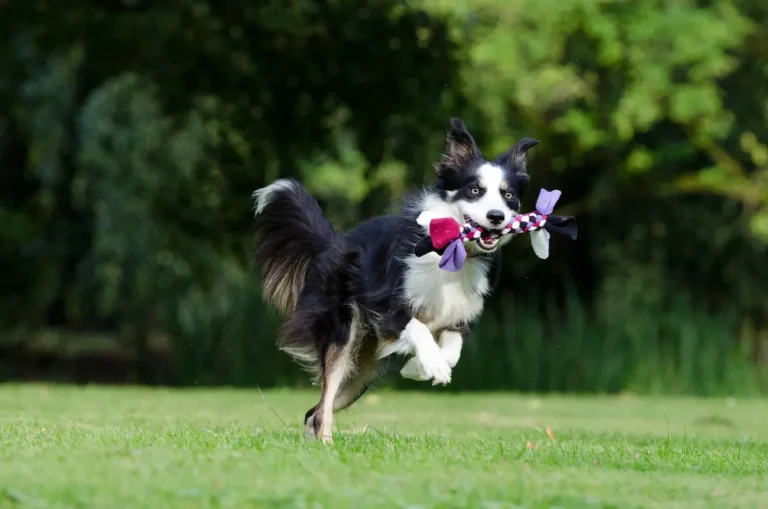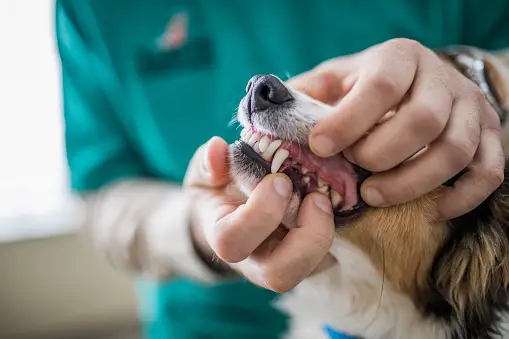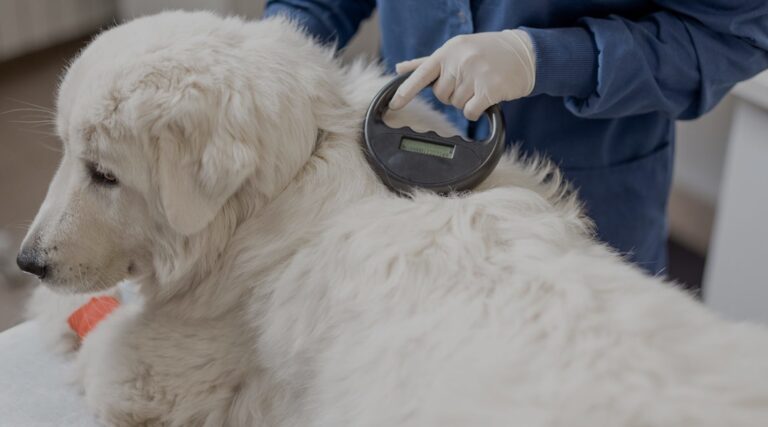Effective ways to keep your dog fit and active with expert advice on designing exercise routine that will not only improve your dog’s physical health but also keep them mentally stimulated. Regular exercise is essential for maintaining a healthy weight, preventing obesity-related health issues, and reducing behavioral problems. Whether you have a small breed or a large breed dog, we have got you covered with exercise tips and ideas that are suitable for dogs of all sizes and fitness levels. So, let’s dive in and discover the best ways to ensure your furry friend stays happy, healthy, and full of energy!
Importance of Safe Dog Exercise
Benefits of Regular Exercise for Dogs
Regular exercise is essential for dogs to maintain good physical and mental health. Here are some key benefits of incorporating regular exercise into your dog’s routine:
- Weight Management: Just like humans, dogs can also struggle with weight gain and obesity. Regular exercise helps dogs burn calories and maintain a healthy weight, reducing the risk of various health issues such as joint problems, heart disease, and diabetes.
- Mental Stimulation: Exercise provides mental stimulation for dogs, which is crucial for their overall well-being. By engaging in physical activities, dogs release excess energy and reduce boredom, preventing destructive behaviors like chewing or excessive barking.
- Muscle Tone and Strength: Exercise helps dogs develop strong muscles, improving their overall strength and endurance. This is especially important for working dogs, such as service dogs or those involved in agility training, as it enhances their performance and increases their lifespan.
- Cardiovascular Health: Regular exercise promotes a healthy heart and improves blood circulation in dogs. This reduces the risk of cardiovascular diseases and strengthens their cardiovascular system, enabling them to lead an active and energetic lifestyle.
- Socialization Opportunities: Exercise routines provide dogs with opportunities to interact with other dogs and humans, contributing to their socialization skills. This is particularly beneficial for puppies and young dogs, as it helps them learn appropriate behavior and develop positive relationships with others.
Risks of Inadequate Exercise for Dogs
Insufficient exercise can have negative consequences on a dog’s physical and mental well-being. Here are some risks associated with inadequate exercise:
- Weight Gain and Obesity: Lack of exercise can lead to weight gain and obesity in dogs, which in turn increases the risk of various health problems such as arthritis, diabetes, and heart disease. It is essential to provide enough physical activity to help dogs maintain a healthy weight.
- Behavioral Issues: Dogs that don’t receive enough exercise may become restless, anxious, or even aggressive. Excess energy buildup can result in destructive behaviors like chewing furniture, digging holes, or excessive barking. Regular exercise helps dogs release pent-up energy and promotes calmness and better behavior.
- Muscle Weakness: Inadequate exercise can result in muscle weakness and poor muscle tone in dogs. This can limit their mobility, hinder their ability to perform daily activities, and make them more prone to injuries.
- Reduced Lifespan: Lack of exercise can contribute to a sedentary lifestyle, which may negatively impact a dog’s overall health and lifespan. Dogs that don’t engage in regular physical activity are more susceptible to diseases, obesity-related issues, and premature aging.
- Mental Health Issues: Dogs that don’t receive enough exercise may experience increased stress, anxiety, and boredom. This can lead to behavioral problems and affect their overall mental well-being. Regular exercise provides mental stimulation, promotes relaxation, and reduces the risk of mental health issues.
It is crucial to prioritize safe and regular exercise for dogs to ensure their physical and mental well-being, prevent health issues, and promote a happy and active lifestyle.
Choosing the Right Exercise for Your Dog
When it comes to keeping your dog fit and active, choosing the right exercise routine is essential. Every dog is unique, and their exercise needs may vary depending on factors such as breed, age, and overall health. By considering these factors, you can ensure that your furry friend gets the exercise they need to stay healthy and happy.
Considerations for Different Dog Breeds
Different dog breeds have different exercise requirements. Some breeds are naturally more active and require high-intensity workouts, while others are more laid-back and prefer gentle exercise. Understanding your dog’s breed-specific needs can help you select the appropriate exercise routine.
For example, working breeds like Border Collies and German Shepherds thrive on mentally stimulating exercises, such as agility training or obedience classes. On the other hand, smaller breeds like Chihuahuas or Bulldogs may prefer shorter walks or play sessions due to their physical limitations.
It’s important to research and understand your specific breed’s exercise needs to ensure you provide them with activities that keep them engaged and physically fit.
Factors to Keep in Mind for Senior Dogs
As dogs age, their exercise needs change. Senior dogs may have reduced mobility, joint pain, or other health conditions that require a modified exercise routine. It’s crucial to consult with your veterinarian to determine the appropriate exercise plan for your aging dog.
Low-impact exercises like swimming or gentle walks can help maintain muscle tone and joint flexibility without putting excessive strain on their bodies. Additionally, mental stimulation through interactive games or puzzle toys can help keep their minds sharp.
Keep an eye out for signs of fatigue, discomfort, or excessive panting during exercise. Adjust the intensity and duration of the activities to suit your senior dog’s capabilities and ensure their safety and well-being.
Tailoring Exercise to Fit Your Dog’s Needs
Each dog is unique, and their exercise routine should be tailored to their individual needs. Factors such as size, energy level, and overall health should be considered when designing an exercise plan for your dog.
For high-energy dogs, activities like running, fetching, or participating in dog sports can help burn off excess energy and keep them mentally stimulated. On the other hand, low-energy dogs may prefer shorter walks or gentle play sessions.
It’s important to start slow and gradually increase the intensity and duration of the exercise. Pay attention to your dog’s behavior and adjust the routine accordingly. If they seem tired or disinterested, it may be a sign to scale back or try a different activity.
Remember to provide plenty of water breaks and ensure your dog has access to shade or shelter during outdoor exercise sessions, especially on hot or humid days.
By tailoring the exercise routine to fit your dog’s needs, you can help them stay fit, active, and happy while minimizing the risk of injury or exhaustion.
In conclusion, choosing the right exercise routine for your dog is crucial for their overall health and well-being. Consider their breed, age, and individual needs when designing their exercise plan. Whether it’s high-intensity workouts, low-impact activities, or mental stimulation, finding the right balance will ensure your furry friend stays fit, active, and content.
Creating a Safe Exercise Routine
When it comes to keeping your dog fit and active, it is important to establish a safe exercise routine. This helps to ensure that your furry friend stays healthy and avoids any potential injuries. Here are some key factors to consider when creating a safe exercise routine for your dog:
Consulting with Your Veterinarian
Before starting any exercise routine, it is crucial to consult with your veterinarian. They will be able to assess your dog’s overall health and provide personalized recommendations based on their age, breed, and any underlying medical conditions. Your veterinarian can also guide you on the appropriate duration and intensity of exercise for your dog.
Warming Up and Cooling Down
Just like humans, dogs also benefit from warming up and cooling down before and after exercise. A proper warm-up session helps to prepare your dog’s muscles, joints, and cardiovascular system for the physical activity ahead. This can include a short walk or gentle stretching exercises.
Similarly, cooling down allows your dog’s body to gradually return to its normal state after exercise. It helps prevent muscle stiffness and soreness. You can cool down your dog by gradually decreasing the intensity of the exercise and finishing with a short walk or gentle stretching.
Avoiding Overexertion and Heatstroke
While it’s important to provide your dog with regular exercise, it’s equally important to avoid overexertion. Dogs have different energy levels and exercise needs depending on their breed and age. It’s crucial to observe your dog’s behavior during exercise and adjust the intensity and duration accordingly.
Additionally, dogs are more susceptible to heatstroke than humans. To prevent heatstroke, it’s essential to exercise your dog during cooler times of the day, such as early morning or late evening. Always provide plenty of fresh water and avoid exercising in extreme heat or humidity.
By following these guidelines and creating a safe exercise routine, you can ensure that your dog remains fit, active, and healthy. Remember, the key is to consult with your veterinarian, warm up and cool down properly, and avoid overexertion and heatstroke. Your furry friend will thank you for it!
Fun and Engaging Exercise Ideas
Walking and Jogging
Walking and jogging are excellent exercises for dogs of all ages and sizes. Not only do they help to keep your dog physically fit, but they also provide mental stimulation and an opportunity for socialization. Whether you have a small dog or a large breed, these exercises can easily be tailored to suit your pet’s energy levels and abilities.
- Walking: Taking your dog for a daily walk is a simple yet effective way to keep them active. Start with short distances and gradually increase the duration as your dog builds stamina. Remember to use a sturdy leash and choose safe routes away from traffic or crowded areas.
- Jogging: For high-energy dogs or those who need more intense exercise, jogging can be a great option. Before starting a jogging routine, ensure that your dog is physically capable and has been properly trained to run alongside you. Start with short bursts of jogging and gradually increase the distance and pace over time.
Playing Fetch and Tug-of-War
Playing fetch and tug-of-war are two interactive games that provide both physical exercise and mental stimulation for your furry friend. These activities can be enjoyed both indoors and outdoors, making them ideal for any weather condition.
- Fetch: Dogs love chasing after toys, and playing fetch is an excellent way to engage them in a fun exercise routine. Use a durable and safe toy, such as a tennis ball or frisbee, and throw it a reasonable distance for your dog to retrieve. Remember to praise and reward them for bringing the item back to you.
- Tug-of-War: This game is perfect for dogs who enjoy a bit of friendly competition. Use a strong rope toy or a tugger and engage your dog in a gentle tug-of-war. Remember to teach them proper commands, such as “drop it” or “let go,” to ensure safe and controlled play.
Swimming and Water Activities
Swimming and water activities are excellent low-impact exercises that provide a refreshing and enjoyable workout for your dog. These exercises are particularly beneficial for dogs with joint issues, as they help to relieve pressure on their joints while still providing a full-body workout.
- Swimming: If you have access to a safe and supervised body of water, swimming can be an excellent exercise for your dog. Start in shallow water and gradually increase the depth as your dog becomes more comfortable. Always use a canine life jacket, especially for dogs who are new to swimming.
- Water Activities: Aside from swimming, there are various other water activities you can explore with your dog. These may include playing with water toys, running through sprinklers, or even setting up a small kiddie pool in your backyard. These activities not only provide exercise but also help to keep your dog cool during hot summer months.
Remember, before engaging in any new exercise routine with your dog, it’s important to consult with your veterinarian. They can provide guidance based on your dog’s specific needs and any underlying health conditions. With the right exercise routine, you can keep your dog fit, active, and happy!
Incorporating Mental Stimulation
Brain Games and Puzzle Toys
One of the key aspects of keeping your dog both fit and active is to provide them with ample mental stimulation. Just like humans, dogs also need to exercise their brains to stay sharp and engaged. One effective way to achieve this is by incorporating brain games and puzzle toys into their exercise routines.
Brain games and puzzle toys are designed to challenge your dog’s cognitive abilities and problem-solving skills. These toys usually come in various shapes and sizes, with hidden compartments and compartments that require your dog to figure out how to access treats or toys. Not only do these games keep your dog entertained, but they also provide mental stimulation and help prevent boredom.
Consider investing in puzzle toys that require your dog to work through different levels of difficulty. Start with simpler puzzles and gradually increase the complexity as your dog becomes more proficient. This will keep them engaged and motivated to solve the puzzles, providing an excellent mental workout.
Training Sessions and Obedience Exercises
Another effective way to incorporate mental stimulation into your dog’s exercise routine is through training sessions and obedience exercises. Dogs are naturally eager to please their owners and enjoy learning new commands. By engaging your dog in regular training sessions, you not only reinforce good behavior but also provide mental stimulation.
During training sessions, you can teach your dog new tricks, practice obedience commands, and work on their problem-solving abilities. Incorporate a variety of commands and exercises to keep your dog mentally engaged and challenged. Remember to use positive reinforcement techniques such as treats or praise to motivate and reward your dog for their efforts.
Consider enrolling your dog in obedience classes or seeking the guidance of a professional dog trainer. They can help you design a training program tailored to your dog’s specific needs and abilities, ensuring they receive the mental stimulation required to keep them fit and active.
Interactive Toys and Treat Dispensers
Interactive toys and treat dispensers are another fantastic way to provide mental stimulation for your dog. These toys require your dog to interact with them in order to access treats or toys, keeping them mentally engaged and entertained.
There are various types of interactive toys available in the market, ranging from treat-dispensing balls to puzzle feeders. These toys not only challenge your dog’s problem-solving skills but also promote physical activity as they try to retrieve the treats or toys.
Consider rotating different interactive toys and treat dispensers to keep your dog’s interest piqued. This will prevent them from getting bored and ensure they stay mentally stimulated during their exercise routines. Remember to supervise your dog while they interact with these toys to ensure they are safe and don’t accidentally swallow any small parts.
In conclusion, incorporating mental stimulation into your dog’s exercise routine is essential for keeping them fit and active. Brain games and puzzle toys, training sessions and obedience exercises, as well as interactive toys and treat dispensers, are all effective ways to provide the mental stimulation your dog needs. By engaging your dog’s mind, you’ll not only improve their overall well-being but also strengthen the bond between you and your furry friend.
Monitoring Your Dog’s Exercise Routine
Observing Signs of Overexertion
It is crucial to closely monitor your dog’s exercise routine to ensure they are not overexerting themselves. Dogs can easily become overheated and exhausted, which can lead to serious health issues. Here are some signs to watch out for:
- Excessive panting: If your dog is excessively panting and unable to catch their breath, it may be a sign of overexertion. They may be pushing themselves too hard and need a break.
- Sluggishness: If your dog seems unusually tired or lacks energy during or after exercise, it could be a sign that they are being overworked. Pay attention to any changes in their usual behavior.
- Muscle tremors or stiffness: Overexertion can cause muscle tremors or stiffness in dogs. If you notice any abnormal movements or difficulty in their mobility, it’s essential to stop the exercise immediately.
- Excessive drooling: While some drooling is normal during exercise, excessive drooling can indicate that your dog is pushing themselves too hard. Keep an eye on their drooling behavior to ensure it doesn’t become excessive.
Recognizing Behavioral Changes
In addition to physical signs, it’s essential to monitor your dog’s behavior during and after exercise. Behavioral changes can also indicate if they are being overexerted. Look out for the following:
- Agitation or irritability: If your dog becomes unusually agitated or irritable during exercise, it may be a sign that they are pushing themselves too hard. Monitor their behavior closely and provide breaks when necessary.
- Fear or reluctance: Dogs who are overexerted may become fearful or reluctant to continue exercising. If your dog starts showing signs of fear or refuses to participate in their usual activities, it’s a clear indication that they need a rest.
- Lack of interest: If your dog loses interest in their exercise routine or toys they usually enjoy, it could be a sign of overexertion. Pay attention to any changes in their enthusiasm and adjust the routine accordingly.
Adjusting the Routine as Needed
To prevent overexertion and keep your dog’s exercise routine safe, it’s crucial to make adjustments as needed. Here are some tips to help you maintain a suitable routine for your furry friend:
- Gradual progression: Start with shorter exercise sessions and gradually increase the duration and intensity over time. This allows your dog’s body to adapt and prevents sudden strain.
- Rest periods: Incorporate regular rest periods during exercise sessions. This gives your dog a chance to recover and prevents them from becoming overworked.
- Weather considerations: Adjust the exercise routine based on weather conditions. Avoid exercising your dog during extreme heat or cold, as it can lead to overheating or hypothermia.
- Age and breed-specific needs: Different dog breeds and ages have varying exercise requirements. Research and understand your dog’s specific needs to create a routine that suits them best.
By monitoring your dog’s exercise routine, observing signs of overexertion, and adjusting as needed, you can ensure their safety and keep them fit and active for years to come. Remember, a healthy dog is a happy dog!
The importance of providing safe and regular exercise routines for our furry companions cannot be stressed enough. Not only does exercise help keep our dogs physically fit and active, but it also plays a crucial role in their mental and emotional well-being. By incorporating a variety of activities such as walking, running, playing fetch, and swimming, we can ensure that our dogs lead a healthy and balanced lifestyle. It is essential to tailor the exercise routine to our dog’s breed, age, and overall health condition, always keeping safety in mind. Remember, a tired dog is a happy dog, so let’s make exercise a priority in our dog’s daily routine and watch them thrive.







